- 020 7183 6944 Call for a free quote or advice
- Mon-Fri: 8am - 6pm, Sat: 10am - 3pm

Home » Electric Oven Repairs » Oven Tripping Electrics

Oven Tripping Electrics
In case your oven trips the Residual Current Device (RCD), fuse or electrics; then you can run several checks that will help you unravel exactly where the problem lies. However, it is important noting that there are more problems not outlined in this post. The issues covered here are the most common ones, which will help you eliminate various possibilities, taking you closer to the real issue(s).

Only trained and qualified technicians may be allowed to work on electrical equipment and we strongly advise you to call a professional electric oven repair engineer.
Before you begin the diagnosis process, ensure you disconnect the appliance from the mains. An earth leakage or dead short is the most common causes of RCD and fuse trips, which may occur each time you switch the appliance on. Working with some appliances, you realise that they trip conditionally; when using specific functions. This should tell you, in most instances, that certain components are faulty, although it might not be so at all times.
Tracking down causes of problems for cookers, hobs and ovens can be quite easy, mostly involving elimination processes and use of common sense. When you see the fuse break the moment you apply power to the connected appliance, you should start examining the wiring system. Ensure that it is sound and correct. Please do not take any action unless you are confident you can do it safely and legally, it’s always best to call a qualified electric oven repair engineer than go it alone.
Next, make sure that the supply is working appropriately, and the appliance is connected in the right manner. Incorrectly placed terminal blocks are a normal occurrence in new appliances. Hob installers also often make the mistake of interchangeably placing the terminals. As you see, most of these problems concern installation, which your manufacturer might charge you for, as they do not fall under their guarantee terms and conditions.
The clock is the next thing using power in cookers and ovens. Being a huge mains switch component, it can trip the cooker or oven at the moment of applying power to a new product. This is not to say that such incidences do not occur with older products, only that they are not very rampant.
If power blows immediately you select a given function in your appliance, it means one of the components is faulty. This depends on which appliance you are using, as various hobs, cookers, and ovens vary in their system setup and component composition. Such an occurrence in a fundamental oven indicates issues to do with parts supplied with energy at the moment of powering on.
Some of the parts of a non-fan (static) oven powered on switching to cooking mode include:
- Cooling thermostat control and fan motor
- Internal lamp
- Oven heating (lower and upper) element
- Safety thermostats
- Selector switch
For most powering- related problems, the problem often lies in the selector switch, with damage seen in the form of switch poles arcing, burning or scorching. Another issue could be in the elements, which you should check using an earth leak or electrical meter.
When you are not sure of where the problem with your oven is, please be sure to contact an electric oven repair engineer, rather than trying to fix it by yourself. In case the product’s warranty is still applicable, do not hesitate to visit your supplier.
Major Appliance Brands We Repair

- Search forums
Follow along with the video below to see how to install our site as a web app on your home screen.
Note: This feature may not be available in some browsers.
Zanussi ZOB383x fan oven tripping RCD
- Thread starter Brigadier
- Start date 6 Oct 2016

PrenticeBoyofDerry
On the oven control knob, there will be a number of settings. From those settings there will be one that will do top element only and another that only operates the bottom element. You can eliminate which element is faulty by trying each. Does the fan work? You could also test the elements, using continuity across the two pins of the element, that would require a two pole continuity meter and undoing stuff!
Yes Try each option, selecting the setting with both top and bottom element will not help much. The fav is one of the elements. If either setting trips RCD, you can then double check by removing the back of oven. Taking off the contacts of the two live pins of the element and test for continuity (isolate electrics first though) across the pins. An open circuit will indicate faulty element!
Right, Tested both elements - 26 ohms (fan), and 48 ohms (bottom). No apparent earth leakage. Reset clock. Reassembled, and tried the oven again before I put the covers back on. Appeared to trip when temp knob turned. Put covers back on, and put oven back into unit. So, went through the switching process - turning knob anticlockwise through OFF - oven lamp - top&bottom cooking -top cooking - bottom cooking - mid-grill cooking - full-grill cooking - grill and fan cooking - fan cooking - defrost - OFF At each step, turned the temp from 0 to 250 and back down again. Not a single trip. Baffled........
So oven working now, did you have an spillages prior to tripping?
Not that we can recall. Just tripped on switch on. Will have to see if it pops again, and note the conditions.
Tripped again tonight. Fan oven, 100deg (to warm the takeaway), tripped after about ten minutes. One of the elements failed, or something like the thermostat?
Sometimes it does take a temperature rise for the element to become faulty. When it cools down it can then be used again until heat is applied to it again. Do as before and get whether it happens with top or bottom element.
- 10 Oct 2016
Will do, added to list of jobs for after work! I hope it's not the bottom element, because it's four times the cost, and I can't see how to get it out without tearing the insulation.
Brigadier said: Will do, added to list of jobs for after work! I hope it's not the bottom element, because it's four times the cost, and I can't see how to get it out without tearing the insulation. Click to expand...
Right.... Set the oven selector to bottom-element-only, and turned the temp to 150 C. And waited. Oven got hot, and I left it for about ten minutes like that. Then, leaving the selector switch alone, I turned down the temp. knob. Which tripped the RCD. Reset the RCD....... Set the selector to top element only (temp knob was still on zero), and reset the clock. As soon as the clock went "live", this tripped the RCD again. Has this narrowed it down any? I'd try it again, but not until I've sent this!
OK.... let it all cool down. Running the fan oven setting now, although I do not know whether that sects the circular element alone, or the bottom one as well. Given it has tripped on solely-bottom-element, and fan-cooking, i'm guessing some problem with the temp control side of things? We wait.........
Tripped again, in a couple of minutes.
What happens if you put temp on zero, and selector to off, but with clock set? Go through the selection options without temp set and then with temp set.
DIYnot Local
If you need to find a tradesperson to get your job done, please try our local search below, or if you are doing it yourself you can find suppliers local to you.
Select the supplier or trade you require, enter your location to begin your search.
Are you a trade or supplier? You can create your listing free at DIYnot Local
Similar threads
- 21 Aug 2012
- 14 Jul 2012
- 27 Feb 2016
- 28 Feb 2010
- 18 Feb 2016

How To Investigate A Constantly Tripping RCD
Skill level: competent DIY'er. Time: 15-20 mins
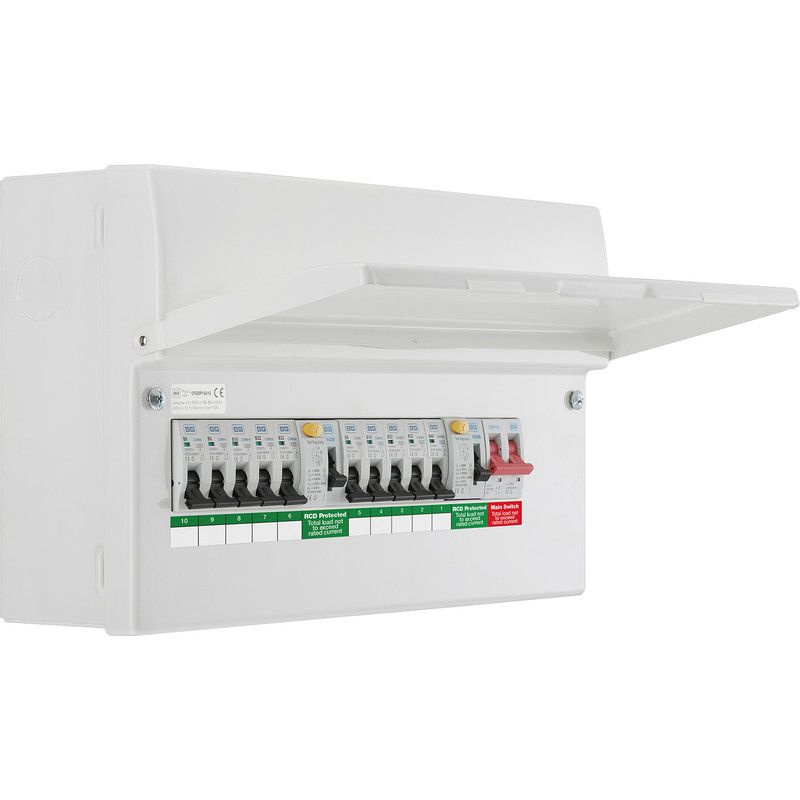
What causes an RCD to trip?
An RCD that trips again (and again) after reset is a ‘constantly tripping RCD’. The problem is unlikely to be the RCD. The problem is most likely an electrical appliance causing the RCD to trip; the RCD is ‘doing its job’; the RCD is removing the supply to an unsafe electrical circuit.
How to find the cause
The approach is to remove (disconnect) as many electrical appliances from the circuit as possible and then connect them back into the circuit one at a time. The faulty appliance will cause the RCD to trip; this will show you which appliance is faulty (causing the RCD to trip).
"You should remove (unplug) all electrical appliances. If it is not possible to unplug an appliance, turn the appliance off."
- After unplugging all appliances, or turning them off, see if the RCD will reset. If the RCD will reset, the fault is with one of the appliances; if the RCD trips again the fault is with the electrical circuit and you will need to speak to a qualified electrician for advice.
- Plug each appliance in one at a time. After plugging the appliance in, or turning an appliance on, reset the RCD; keep plugging the appliances in, and resetting the RCD, until the RCD trips.
- Connecting the appliances one at a time, and resetting the RCD in-between, will show you the which appliance is causing the RCD to trip. You should then repair, or replace, the faulty appliance.
"Plugging each appliance in one at a time is not a 100% guarantee of finding the faulty appliance"
- If the faulty appliance is cheap to replace, for instance a kettle, replacing the appliance is often cheaper than calling a qualified electrician to look into the problem further. If replacing the cheap appliance does not allow the RCD to be reset call a qualified electrician.
- If the faulty appliance is expensive, for instance a home cinema centre, call a qualified electrician. The electrician will look into the tripping RCD to ensure the expensive appliance is causing the RCD to trip. The electrician will also know what else can be done to stop the RCD tripping without replacing the expensive appliance; this will probably be cheaper than replacing the appliance.
Written by Gareth Pope Qualified Electrician with 30 years experiance. Book a video call with Gareth

Start your own free preventive maintenance plan. Click or scan to install. Each plan has been designed by experts and is tailored to your home by Planna.
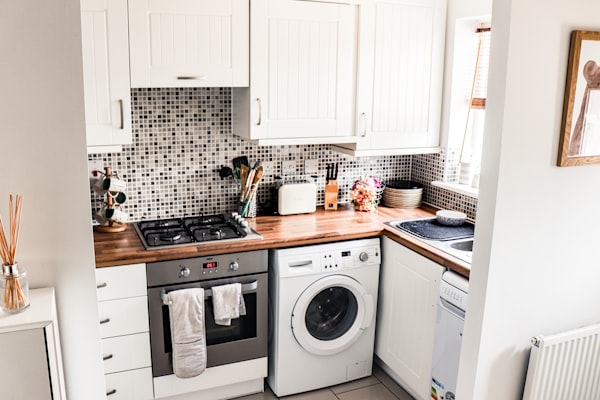
5 easy tasks to reduce the risk of leaks and water damage in your home.

7 steps to fix that annoying squeaky floorboard
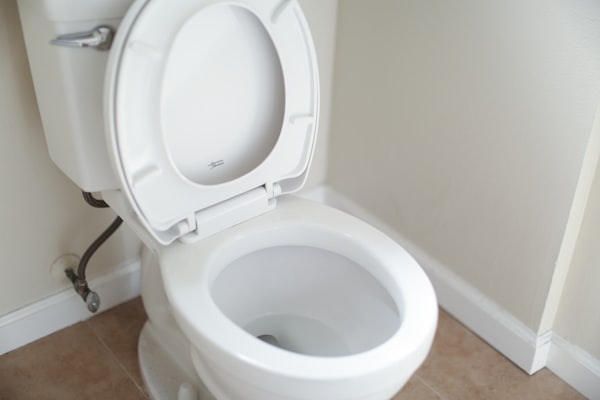
8 steps to unblock a toilet

Most popular summer DIY tasks

How to identify and treat woodworm in your home
- 033 0320 1538
- Book a service
Why Does My Oven Keep Tripping the Electricity?
- Fantastic Team
- Published: Oct 02/2018
- Last update: May 19/2023
- Views: 106,596
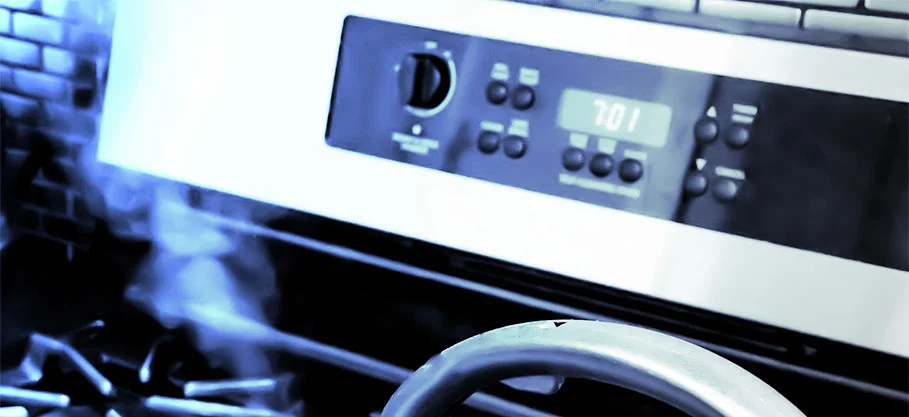
Is your cooker constantly tripping the circuit breaker (RCD)?
This could really cast a shadow on your dinner plans.
If you are wondering what may be the issue, you are in the right place.
Before learning why is your oven keeping the electricity, let’s see what is an RCD. A r esidual- c urrent d evice is a tool that instantly breaks an electric circuit to prevent serious harm from an ongoing electric shock.
Basically, it can save you from a severe electricity attack. When the RCD or as some call it – fuse, trips and the culprit for that is your electrical appliance, in this case, your oven, it will be as a result of either a dead short or earth leakage. This means that the RCD will trip every time you turn the appliance on.
- Types of Electrical Faults
- Problems Which Trip the RCD
- How to Test Oven Components
With that being said, some household devices tend to “trip” only when you use certain functions. The problem is most commonly seen with cooking apparatus. This shows that the appliance has a dysfunctional component. The above explanation is not carved in stone but is valid in most cases.
So, if you:
- Are having issues with your oven tripping the RCD;
- Want to know what the potential problems are;
- Are looking for ways to test the oven components,
Then read on!
In this article, we will cover the types of electrical faults you might encounter, the general problems that cause your oven tripping the rcd and how to test the components.
The types of electrical faults you can encounter
To help you understand why your oven keeps tripping the rcd, we will explain with the use of the principle of standard house wiring as an example.
So, there are three main types of wirework in your property:
- The Live wire;
- The Neutral one;
- The Ground.
The Live is the main power wire, the return one is the Neutral and the Ground is the safe return wire.
The power that your oven uses to function goes through the Live wire and returns through the Neutral one. The electricity flows through the Ground system only if there is a problem with the device.
You’ve probably heard of the term “Short Circuit”. It means that the power that goes through the Live and Neutral wires is unhindered, or in other words – the electricity has a very low resistance path between the two. Short circuits occur when a direct link has been made between the oven’s body and the Live and Neutral. This makes the electricity flow unhindered back to Neutral, thus shorting the circuit. When this happens, you’ll hear a BANG! The cause for this is the resistance building up in the oven, which leads to a burn-out of the let’s say the selector switch or any other element.
When the safety Ground wire conducts current, a Ground fault occurs. RCB (Residual Current Breaker/s) are designed in a way that they can trip open the circuit if there is more than 0.005A electricity flow through the ground path. It keeps in check the electricity flowing through the Live and Neutral, as well as if any difference occurs. If the calculated difference is more than 0.005A, the circuit trips open. By doing this, the current flows straight to the earth and the residual circuit breakers can still detect a fault. Basically, a ground fault occurs when some or all of the Live current flows anywhere besides the Neutral wire.
In the case of an oven, you are more likely to experience an Open Circuit than a Short one. Such faults happen when your appliance has an element that doesn’t work properly. A typical example is an oven tripping the rcd when it reaches a certain temperature. The heat triggers the broken wiring inside the component to expand, which results in failure. With time passing, the part will get even worse and the problem will start to show up more frequently.
We advise that any kind of electrical work should be handled by a certified technician. Handling house wiring is a tough challenge. You can harm yourself and cause damage to your property. You could practically start a fire if you don’t know what you’re doing. Fantastic Services can provide you with qualified and experienced electricians who can take care of all the domestic electrical issues that you might be experiencing. From simply changing a light bulb to fuse boxes & consumer unit replacement – we do it all! Book us today!
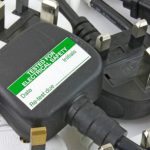
The general problems that can cause the RCD to trip and how to fix them
There is a problem with the circuit.
If there are any existing problems with the circuit, you will need a qualified professional to handle the job. They will investigate whether multiple devices have been attached to the same circuit as the cooker. If that is the issue, the solution is simple – just unplug all the other appliances that are connected and turn on the cooker again. This should stop the oven tripping the RCD. If there are no other appliances plugged into the same circuit, the technician will do the following: He will measure the current power load of the oven with a clamp-on ammeter and if it’s too high for the circuit, you’ll be advised to upgrade it.
What may cause the electricity to trip can be also a circuit wiring problem or a damaged breaker. If that is the case, again, you should hire a qualified electrician to check for any faults in the insulation of the circuit wires. He will test the suspected circuit break by swapping it with one of the same ratings from another functioning circuit.
There is an existing issue with the oven power plug
You’ll need a electrician for this one, as well. He will measure the current when the cooker is off. If everything’s is OK, it should read zero. If it shows 0.3A or more, then, the wiring is probably damaged. He’ll also inspect the power plug for any damage, of course, after he unplugs the oven from the electrical socket.
There are companies in Europe that design their appliances with terminal blocks. In order for one of those to work with the UK circuits, the connections need to be fitted in a specific manner. Read the instruction manual, so you know how to correctly connect your newly purchased oven.
However, if you have an older model, check to make sure that the block is in a proper functional shape. The component has the disadvantage of deteriorating as time passes and you’ll need to replace it with a new one. Discuss the matter with an electrician, so he can best advise you on what type of terminal block you should look for.

There is an element in the oven that is out of order
Before you start to snoop around for issues, do the following:
- Check that there aren’t any other connected appliances to the circuit.
- Turn on the oven and set it at a low temperature and if the electricity doesn’t immediately trip, there is no short in the fuse, into which it’s been plugged in.
- After that, raise the oven’s temperature. If it trips, this will be a sure sign that there’s damage in one of the heating components. Call out an electric oven repair expert to replace the broken element to solve the issue.
Other elements that can cause your oven to trip are the selector switch (used to change oven functions), the fan, the thermostat or the internal lamp.
Having trouble with your oven?
Don’t worry! Fantastic Services will send a certified expert to get you out of trouble.

How do I safely test the components?
Once you’ve finished with testing the likely culprits, move on to examine each element in turn. You don’t need to go through every bolt and wire in the oven. There are specific parts of the appliance that are known to break more frequently than others. Here are the three most common elements that tend to cause problems and learn the proper way to test them:
- Thermostats . The quickest way to check if your oven thermostat is working properly is to use an oven thermometer. Switch on your appliance to the highest temperature setting and place the meter inside. If the thermostat is in good working order, the oven’s control panel reading should match that of the thermometer. Repeat the test at different temperatures to get an average and confirm your findings. Furthermore, you can test the thermostat with a multimeter, after you unplug your appliance, first, and remove the device (its exact location will depend on your oven model). This type of test, however, requires electrical expertise.
- Switches. After you are done with the thermostat, it’s time to check the switches. To test them, you’ll need to have access to a wiring diagram if you aren’t confident in how they work. Most of the times, the switches will look burnt-like, there may be marks of arcing across the terminals or the commutator that is placed in the middle will be broken.
- Fan motor . You can detect failure with the multimeter but it won’t give you a 100% guarantee. Insulation might only trip near the operating voltage. To test your oven’s fan motor for damage, measure the resistance between the winding (any terminal) and the motor frame. If anything else out of the ordinary occurs, the element is out of order.
As you can see, handling electricity is a hard and health-hazardous task to undertake. If you experience your oven tripping in the middle of cooking your favourite pasta recipe, we advise you to contact a professional who will fix it for you. This way, you’ll ensure that you don’t damage your appliance any further and eliminate any potentially harmful face-to-face interactions with electricity.
Find out more about our professional oven & cooker repair here.
- Your oven tripping the RCD is usually the result of a dead short or earth leakage.
- In this case, you are more likely to experience an open circuit.
- If there are issues with the circuit, you will need to contact a qualified electrician.
- This issue may also be caused by a problem with the power plug or faulty oven elements.
- The most common faults occur in the oven thermostat, switches and fan motor.
If you’ve found that your appliance in need of replacing, you might be asking yourself if you should get a gas or electric oven . Luckily, our helpful blog post on the matter has all the information you need to make the right choice!
Did you find this information useful? Have any further questions? Let us know in the comments below!
Enjoyed this article? Share with your friends!
Most Popular
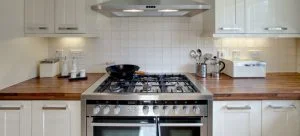
Need a skilled handyman?
Contact a Fantastic professional!
Keep reading

The SMEG Oven Symbols Guide
- May 03/2018

How to Deal with Oven Cleaner Fumes
- Dec 18/2018
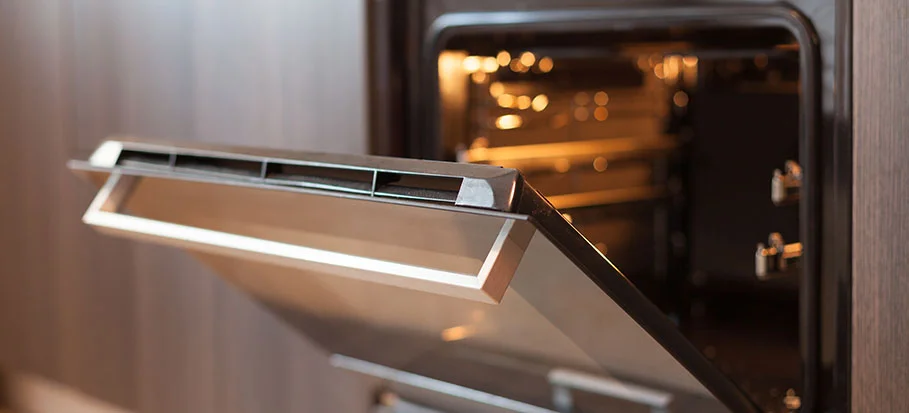
How to Clean Between Oven Door Glass Easily
- May 29/2018
Book Fantastic Services
- Removals & Storage
- Plumbing Services
- Pest Control
- View all services

Join the Fan List!
The only home improvement newsletter you will ever need!
We will never spam you. Pinky promise!
For more information, check out our privacy policy.
Pin It on Pinterest
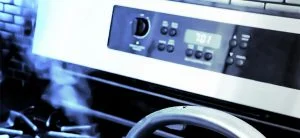
Log in or Sign up
You are using an out of date browser. It may not display this or other websites correctly. You should upgrade or use an alternative browser .
Indesit oven tripping the RCD
Discussion in ' Electricians' Talk ' started by Devil's Advocate , Jan 20, 2013 .
Devil's Advocate Guest
I have an Indesit KP 59 oven which was fitted about 7 years ago but which we hardly ever use - the microwave combi oven does our daily needs. The actual oven has probably not been used more than 10 times. The last few times we've used it, it has tripped the CU's 30mA RCD. It isn't a consistent problem, tho' - it worked absolutely fine the second-last time it was used, repeatedly tripped the RCD the time it was used before that, and - last night - it ran fine for 10 minutes before plunging us all into darkness. The weird thing is, when I reset the RCD, I tried the oven again: this time, as far as I recall, I only got as far as turning on the main selector control - to 'defrost' or 'fan' - and hadn't even touched the oven temp control, when it all went 'pop' again. (I won't mention that my wee girl was having her birthday party at the time - the oven was for pizzas and other carp - and the screams each time would have made Dracula scamper...) Gawd, I hate intermittent faults like this. Especially ones that don't make much sense to me - how did it trigger the RCD without even the element being on? Is the fault in the fan? The switch? What kind of bludy fault can it be... :'( ? Havijng only had around 10 uses, the element is almost certainly ok anyways. Any ideas where I start? Ta very muchly.
J.P. New Member
Is the circuit dedicated or non dedicated DA?
seneca Screwfix Select
Probably a leaky element, if the internal switches are single pole a leaky element could still trip the rcd if it's leaking N-E. It could be dampness in the element especially as it gets little use, try heating it up a few times by re-setting the rcd each time it trips.
Thanks for your replies, gents. 'Dedicated'? Er... It has its own supply (6 or 10mm2) fed by a 32A MCB - is that what you mean? This goes to a cooker switch which also has a single socket on it - with a telephone charger plugged in... I did wonder about damp, Sen. But then it was running for a good 10 minutes last night before it tripped. Still doesn't rule it out tho' - as you dry out one part, the moisture can condense on others. Interesting about the N-E leak. Neffer thought of that. My earthing system is by an earth rod - does that make it more or less likely? I'll give it a good heat-through tomorrow - during the day when I can see what I'm doing when it goes 'pop'... Cheers.
If the element is accessible throughout it's length and you have a small blow torch warm it up a bit with that DA.
Thanks, Sen. Fired her up to a warm 150oC and all seemed well. First tried the main circular fan, and it ran fine, got it up to temp and all was well. Then tried just the upper element (the rear fan runs with this) - again all good. Ran that for a good 10 minutes. Then just the bottom element (again with fan running) and all was well. Ran that for a good few minutes - and then 'POP'. Turned oven off, reset the RCD, pressed the 'manual' button, turned on the oven selector switch - and 'POP'. The only thing that will run without it tripping is the solitary oven fan on the 'defrost' setting. Any other setting (they all have combinations of heating element) - even with the temp thermostat off - will immediately trip the RCD. What the foff? My conclusions so far (other than I haven't a sodding clue) are: a) It can't be a particular element since it doesn't matter where the selector switch is positioned (unless it's a Neutral-Earth trip?) b) The main circulatory fan is running fine. c) It could be the 'cooling' fan which is somewhere in the back casing where I can't see it, but there's definitely a second fan there which comes on with the oven. In fact, now that I think of it, I'm pretty sure this 'venting' fan comes on as soon as you select any oven setting other than the 'defrost' - & before you turn on the actual oven thermostat. Hmmm, could this be the barsteward? Looks as tho' I'm gonna have to rip the B open. I have a half-decent multimeter with a highest resistance scale of 20M. Do you reckon this should detect any lack of perfect insulation betwixt the fan windings and the fan's earthed body? Anyways, will give it a shot... Sigh.
I think your meter on the 20 meg range should have a good chance of showing it up.
unphased Screwfix Select
Stop using it then DA.
UP yer botty Well, it ain't the vent fan - fully disconnected that and it still trips the RCD. When you first switch it on, it takes a couple of minutes before 'POP'. Subsequent turn-ons will trip it in around 30 seconds. The only oven selector position that doesn't trip it is the 'defrost' setting, where the only thing that operates is the fan inside the oven itself. Every other selection - and there's 8 (fan oven, fan with top element, fan with bott, top element on its own...etc) will trip the RCD in the same amount of time without the oven temp control being touched (and that control appears to work fine as it 'clicks' and sets the oven to the selected temp. C'mon, peeps - ideas! Thinking caps on It can't be the lamp as that also comes on with just the defrost setting. The oven temp control does, I guess, come on with everything else - could that be 'leaking'? (It's an RCD fault, not a MCB) There's an electronic clock with timer, but that's working fine as far as I can tell.
Whip your IR tester onto the non plugged in plugtop or cable end DA. Then switch everything on (know there's a few switching permutations) Start unplugging stuff one bit at a time, and then when the tester clears you should find the faulty item what is causing the problem.
As an annexe if no fault shows then maybe the RCD is pre-excited with say what 15mA to 20mA leakage from other stuff/circuits and the oven is sending it over the top - could even be a dicky RCD - maybe a ramp test or mA dump check will verify this if it comes to this stage.
Excited, ma botty. AAAAAAAAAAAAAAAAAAAAAAAAAARRRGGGHHH!!!!!! Why do I have to complicate things?! Why do I have to think ? Don't think. Thinking is bad . I'd assumed it had to be something that was powered up in the oven. But, no. It wasn't. As Sen says above, it could be a N-E leak. And, since all the Ns of all the elements in t'oven are connected together, any one of the barstewrds would have tripped the B regardless of whether that was the leakybastard or not.. "Elementary, dear twitson" If I had just opened up the back and disconnected each foffing element in turn, I would have discovered the fault in 5 minutes. But no. That would have been faaaaar too easy. So I thought about it. Bad move. "Hey - it has to be the vent fan, doesn't it?" thinks I. 'Cos that's the only thing that all the popping positions have in common. So, I disconnected the fan. I pulled off the spade connectors. Which were tight. So I pulled the 'male' spade off the motor too. Y'know - the one that's meant to remain attached ? Neat design. Soldering iron out. I won't mention the sheared bolts from trying to remove the top panel to get access to the front control panel. I won't mention to weird readings from my 20M tester as I tested EVERY foffing thing in that oven for resistance to earth; the overheat stat, the bulbs, the fans, the temp switch, the elements, the aaaaarrrggghhh. Talking of weird readings - how about 9.6M ohms connected one way, and -3.2M ohms when I reverse the tester probes? EH?! What the foff is THAT about? AAAAAaaaaaaarrrggghhh!! Anyways, after searching for the prices of new ovens on t'net, I then relaxed and went back to the oven and pulled off the main element terminals. 'POP'. Then I did the lower element. 'POP'. Then I did the top element. No 'POP'. Took 5 minutes. Sorted. Ordered a new element. Then I sat down and wept. ANYONE COME TO THIS THREAD VIA A 'SEARCH' FOR A SIMILAR PROBLEM? Well, make sure you don't electrocute yourself, and just disconnect (and protect) each element's terminals in turn. Once the oven stops trippin', guess what - you've found your fault. It'll be an element. Almost certainly. Why? Well, why not - what else could it be? Of course it's the bludy element.. . (And, if it isn't, then just disconnect every other foffing thing in turn. Job done .)
Share This Page
- Log in with Facebook
- No, create an account now.
- Yes, my password is:
- Forgot your password?

- Search titles only
Separate names with a comma.
- Search this thread only
- Display results as threads
Useful Searches
- Recent Posts
- This site uses cookies to help personalise content, tailor your experience and to keep you logged in if you register. By continuing to use this site, you are consenting to our use of cookies. Accept Learn More... Dismiss Notice

IMAGES
VIDEO
COMMENTS
Arms. Mar 23, 2021. #5. W_sparky_21 said: Oven trips the Rcd when heating up. Does it twice then after that it will work fine. I've tested the circuit and it's clear, I've disconnected the fan in the oven and it's still tripped. Then I've took the element out and insulation resistant tested it and it's testing fine, any other ideas ...
Update: I've disconnected the fan and then ran the oven at a low temp ( approx 100 degrees ) for 20 mins with no tripping issues and then increased the temp briefly to 150 and then 200 degrees with no problems either - it does come up to the higher temperatures quickly though as the thermostat is right above it, only took about 4 mins to reach that but I didn't want to run at that temp for ...
As it's an RCBO, it offers RCD protection (earth leakage protection) as well as overcurrent. This may point to the oven's insulation breaking down when hot. It may not be overcurrent, as little as 20mA leaking onto earth should trip the RCD. Get that appliance tested! -
The clock is the next thing using power in cookers and ovens. Being a huge mains switch component, it can trip the cooker or oven at the moment of applying power to a new product. This is not to say that such incidences do not occur with older products, only that they are not very rampant. If power blows immediately you select a given function ...
Jul 14, 2020 at 16:11. 1. The resistance to ground may be fairly high, from memory RCD's trip at 30 ma , 240v the resistance to ground could be 8,000 ohms probably less but it may not be a direct short 240/.03=8000 it will probably be lower so a 1k reading to ground could be your fault. But it is usually visible as damage.
When I switched on the thermostat on the oven, it tripped the "downstairs" RCD. Just switching on the lamp or the fan did not trip the RCD. I looked at the wiring in the plug and the earth wire looked to be just a few strands of copper. I stripped insulation and trimmed and refitted all three wires (E,L,N) to the plug, plugged the device in ...
An issue with the electricity supply. Terminal block not tightened. Faulty elements. Convection fan failed. Cooling fan damaged. Oven light housing short-circuitin. Damaged wiring. You might be noticing a common theme with all of these faults, in that something small could be the main cause of your RCD tripping.
Hello Oven trips the Rcd when heating up. Does it twice then after that it will work fine. I've tested the circuit and it's clear, I've disconnected the fan in the oven and it's still tripped. Then I've took the element out and insulation resistant tested it and it's testing fine, any other...
18 Feb 2016. #1. My fan oven element died a few days ago, tripping the mains RCD. Having replaced it a few years ago, I knew what to order and how to do it, so I installed a new one. Everything seemed to go smoothly, but one of the spade terminals on the old element was blackened and worn away, it looked like what happens when a terminal is ...
The fav is one of the elements. If either setting trips RCD, you can then double check by removing the back of oven. Taking off the contacts of the two live pins of the element and test for continuity (isolate electrics first though) across the pins. An open circuit will indicate faulty element! Last edited: 6 Oct 2016.
After plugging the appliance in, or turning an appliance on, reset the RCD; keep plugging the appliances in, and resetting the RCD, until the RCD trips. Connecting the appliances one at a time, and resetting the RCD in-between, will show you the which appliance is causing the RCD to trip. You should then repair, or replace, the faulty appliance.
Karen 2 New Member. My Electrolux fan oven is about 10 years old and has been fine until the last month or so. Now it keeps tripping the RCD, it does not happen until a few seconds after it beeps to say it has reached temperature. If I reset the RCD it then works OK.
Fan motor. You can detect failure with the multimeter but it won't give you a 100% guarantee. Insulation might only trip near the operating voltage. To test your oven's fan motor for damage, measure the resistance between the winding (any terminal) and the motor frame. If anything else out of the ordinary occurs, the element is out of order.
Change the grill element. I had a similar issue with a Bosch in a bosh oven with grill. The element tripped the RCD as it warmed up and when rapid heatup was selected (uses the grill to speed up the process). Humax Foxsat-hdr, Humax HDR1000S, 2x HDR-FOX T2, Sony STRDN1050 receiver, Sony KDL-40W4000 TV.
The main oven on my Smeg DUCO8CSS integrated oven trips the RCD after heating up (about 10~15 minutes). The small oven works fine without issue. All the articles I read on the internet pointed towards the fan element being faulty, so I bought a new one and fitted it and.... the problem still exists. I asked an electrician friend to have a look ...
Since the RCD was replaced, intermittent tripping of new RCD would occur when turning on any hob (turning it on very slowly would normally avoid the tripping). More recently, the non-fan oven now trips the RCD every time it reaches temperature and the thermostat kicks in.
Ran that for a good few minutes - and then 'POP'. Turned oven off, reset the RCD, pressed the 'manual' button, turned on the oven selector switch - and 'POP'. The only thing that will run without it tripping is the solitary oven fan on the 'defrost' setting. Any other setting (they all have combinations of heating element) - even with the temp ...
View All Trip Ideas The Best Road Trips in America. Log in with user name: Remember Me
Find all the transport options for your trip from Elektrostal to Moscow right here. Rome2Rio displays up to date schedules, route maps, journey times and estimated fares from relevant transport operators, ensuring you can make an informed decision about which option will suit you best. Rome2Rio also offers online bookings for selected operators ...
Find all the transport options for your trip from Kiyevsky Railway Terminal to Elektrostal right here. Rome2Rio displays up to date schedules, route maps, journey times and estimated fares from relevant transport operators, ensuring you can make an informed decision about which option will suit you best. Rome2Rio also offers online bookings for ...
of the unit is shown in Figure1a. The oven included two magnetrons of 1.45 kW each with an average operating frequency of 2450 MHz and a sealed resonator with an inner "hot" zone of 50 50 50 mm, in which the maximum microwave field strength was achieved. The oven power control range was from 0.155 to 2.9 kW, and power control was